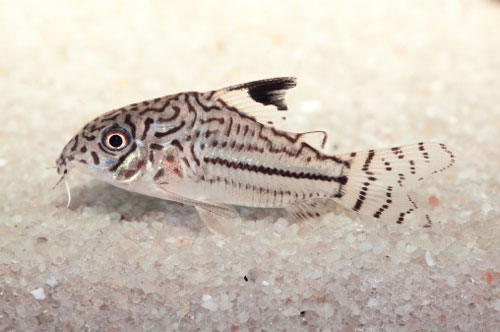As a bodybuilder and weight loss coach, canned tuna fish and most seafoods are staples of both the daily and pre-contest diet plan. Little do most dieters know that mercury contamination is a very widespread health concern for the average public let alone the high consumption fitness set.
Even though most fish have mercury, the FDA specifically warns pregnant women to not eat swordfish, shark and mackerel. For the bodybuilder and fitness enthusiast, we are mostly concerned with the mercury in tuna. That's the one we eat a lot of. The FDA warns women to limit consumption of tuna, so what does "limit" mean and how should the average bodybuilder take this warning?
Its also important to note that just because the FDA hasn't said anything about a particular seafood or fish that you like does not mean that it has low mercury levels. This simply means that the FDA has not tested that particular fish yet. You can find a list of the levels and tested seafood here: http://www.cfsan.fda.gov/~frf/sea-mehg.html
So since we are talking about mostly canned tuna (a bodybuilder staple), is one kind higher or lower in mercury levels than others? The answer is yes believe it or not. The big two types of canned tuna is albacore tuna and chunk light tuna. The FDA states that albacore tuna has a mercury level at three times that of chunk light. Parts per million is the measurement and albacore tuna has .353 ppm versus the .118 of chunk light tuna. An important fact to note is that those measurements only apply to the chunk light tuna if the contents are skipjack tuna and not yellowfin. The reason being is that yellowfin tuna has an almost equal amount of mercury levels sitting at .325 ppm. To make things even a little more interesting, albacore tuna that is troll-caught has lower levels in the range of the skipjack at .14 ppm instead of the .353 ppm found in the longline-caught variety.
The bottom line is that if you are concerned about the mercury levels found in canned tuna and do not know how the fish was caught, then you should stick with canned skipjack tuna fish.
At this point you may be wondering if maybe the can makes any difference and maybe you should be entertaining the idea of getting your tuna fresh or frozen. The news is basically the same regardless if you get it out of a can or fresh. Most tuna you get fresh and frozen is bigeye tuna or yellow fin and bigeye comes in at .639 with yellowfin tuna as mentioned before at .325 ppm for mercury content. If all this has you wondering if you should be switching your fish, where should you go? Well for those that want to kick the tuna to the curb, you may want to check out salmon. The taste isn't even close to the same as tuna but even the higher ratings on the mercury content scale put it at .19 ppm, which is substantially better in toxicity buildup over time if you eat a lot of fish.
So how do you know if you are setting yourself up for mercury poisoning?
The standard used for gauging the danger to your health is set by the EPA and is called a reference dose. What this information provides is the amount of mercury a person could consume in their diet on a daily basis over their whole lives without an APPRECIALBE risk of health related side effects. I for one don't like the term appreciable. I would prefer to know how much is safe to eat without any side effects! At any rate the amount is set at .1 ug of mercury per kilogram of bodyweight per day.
At GotMercury.Org, this value is adjusted for a week of normal consumption and is the value to which your mercury levels are being compared. Consuming this amount puts you at a blood mercury level of 5.8 ug/L or 5.8 parts per billion (ppb) mercury. Anything below this level is deemed to be safe of "appreciable risk" (there it is again) by the EPA.
If we measure that the average can of tuna is six ounces, that means that each can contains 40% of what is deemed safe (using a 170 pound person). This is with the safest chunk light tuna fish. The average bodybuilder that's at 200 pounds and eats 2 cans of the safest tuna a day will find themselves at 220% of the EPA recommended dose of mercury deemed safe of appreciable risk. Change that tuna fish to albacore and you're at 670% of the recommended dose.
So What's The Risks Of Mercury Poisoning From Tuna Fish?
A quote taken directly from the FDA website shows a list of very unfavorable side effects of very high mercury levels. This is not good for the average person, let alone a bodybuilder looking to be a top athlete. Here is what the FDA says;
"The types of symptoms reflect the degree of exposure. Paresthesia (numbness and tingling sensations around the lips, fingers and toes) usually is the first symptom. A stumbling gait and difficulty in articulating words is the next progressive symptom, along with a constriction of the visual fields, ultimately leading to tunnel vision and impaired hearing. Generalized muscle weakness, fatigue, headache, irritability, and inability to concentrate often occur. In severe cases, tremors or jerks are present. These neurological problems frequently lead to coma and death."
What does the World Health Organization say? Well a study on methyl mercury toxicity was published by the World Health Organization in 1990. It concluded, "The general population does not face a significant health risk from methyl mercury." I say that bodybuilders are not the general population and should take care or at the very least be conscious of the amounts they eat and know the possible outcomes.
With that thought in mind, lets go back for another quote from the FDA. "Fish is an important source of high-quality protein, vitamins and minerals. FDA seafood specialists say that eating a variety of types of fish, the normal pattern of consumption, does not put any one in danger of mercury poisoning. It is when PEOPLE EAT FAD DIETS - frequently eating only one type of food or a particular species of fish - that they put themselves at risk."
Well, that changes the context of pretty much everything seeing as multiple cans of tuna are found in almost every bodybuilders lunch box and gym bag. People involved in fitness usually care quite a bit about thier health and should take a serious look at our average levels of canned tuna consumption in relation to a life time of mercury buildup. I'm talking about the average person here, pregnant women and children should be even more interested in this topic as they are more sensitive.
Mothers should take note because even though the average person can pick and choose what they want to do with their bodies, our babies do not have the power to protect themselves.
"Mercury contamination is a serious issue for pregnant women, children, and women who are even considering getting pregnant," said Erin Thompson of Women's Voices for the Earth. "Women buy tuna for themselves and their children. Therefore, it is absolutely critical that women be informed about what types of tuna to avoid, and it the responsibility of the FDA to provide this information."
Again if you would like to know more about this subject, please visit GotMercury.Org as most of the source material was taken from this website.
Available Resources:
1. San Diego sushi report: www.GotMercury.Org/sandiegosushi
2. Consumers can calculate their mercury exposure from seafood: www.GotMercury.Org
3. Revised 2006 FDA mercury in fish and shellfish data: www.cfsan.fda.gov/~frf/sea-mehg.html
4. B-roll of mercury in seafood images.
5. Electronic Press Kit: www.gotmercury.org/press or www.gotmercury.org/info
6. Interviews with mercury poisoned women and children available.
7. FDA and EPA Consumer Advisory on Methylmercury in Fish: www.cfsan.fda.gov/~dms/admehg3.html 8. www.seaturtles.org/press_release2.cfm?pressID=295

 Top 10 Fishkeeping Mistakes
Aquarists can say they’ve never made a mistake in their fish
Top 10 Fishkeeping Mistakes
Aquarists can say they’ve never made a mistake in their fish
 Cleaner Wrasse
Cleaner Wrasse
 Aquarium maintenance logs for freshwater, saltwater and reefkeeping aquarists
Thank you for signing up for the FishChannel newsletter, the
Aquarium maintenance logs for freshwater, saltwater and reefkeeping aquarists
Thank you for signing up for the FishChannel newsletter, the
 Useful Idea For Stronger Nutrition And Wellness
It truly does show when you take time to create a proper no
Useful Idea For Stronger Nutrition And Wellness
It truly does show when you take time to create a proper no
 Keep Your Aquarium Clean With These Tank Tools
Success in maintaining a freshwater system takes applied kno
Keep Your Aquarium Clean With These Tank Tools
Success in maintaining a freshwater system takes applied kno